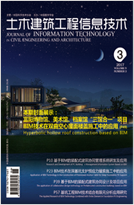Abstract:
With the development of the construction industry and computer science, the functionalities of existing Building Information Modeling (BIM) software no longer meet user demands. The integration and secondary development of BIM technology across multiple fields have become increasingly prominent in BIM-related research, emerging as a recent hotbed of technological innovation.z This study utilizes literature bibliometrics analysis methods, based on BIM secondary development-related documents collected from the China National Knowledge Infrastructure (CNKI), to visually analyze aspects such as publication volume, authors, journals of publication, research hotspots, and trends. Some representative documents are dissected for reference by scholars. Results indicate that management platforms, simulation, path planning, the Internet of Things, collaborative design, deep learning, and numerical simulation are the primary research directions for the secondary development of BIM. The summary research on the integration of BIM technology across multiple fields holds significant importance in accelerating the digital transformation and upgrading of the construction industry, as well as promoting the development of BIM-related software in China.










 下载:
下载: